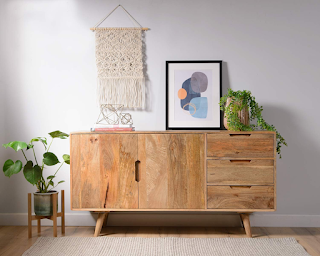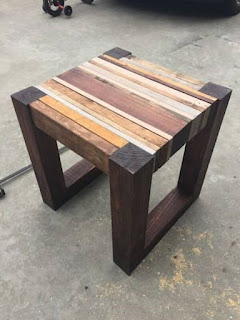DIY Sideboard Furniture Plans for Every Room
The sideboard, a versatile and often overlooked piece of furniture, offers unparalleled storage and stylistic potential for any room in the home. Its adaptability extends beyond the traditional dining room, finding a comfortable place in living rooms, hallways, bedrooms, and even home offices. This comprehensive guide provides detailed plans and considerations for crafting your own bespoke sideboard, tailored to the specific needs and aesthetic of each space.
Designing the Perfect Sideboard: Considerations for Each Room
Before embarking on the construction process, careful consideration of the room's purpose and existing décor is crucial. The design and functionality of your sideboard should seamlessly integrate with its surroundings, enhancing the overall ambience.
The Dining Room Sideboard: A Culinary Companion
The dining room sideboard traditionally serves as a storage solution for dinnerware, silverware, linens, and other dining essentials. Functionality is paramount. Consider incorporating features such as:
- Deep drawers for linens and placemats.
- Adjustable shelves to accommodate varying sized dishes and serving platters.
- Cutlery trays for organized silverware storage.
- A wine rack or dedicated liquor storage compartment.
- A surface area sufficiently large for displaying serving dishes or decorative items.
Aesthetically, a classic and elegant design complements most dining room styles. Consider using rich wood tones like mahogany or cherry, or opt for a painted finish in a neutral color to match your existing décor. Incorporate detailed molding and hardware to enhance its visual appeal.
The Living Room Sideboard: Entertainment Central
In the living room, the sideboard transforms into an entertainment hub. Its primary purpose shifts towards media storage and display. Functionality here should prioritize:
- Open shelving for media consoles, gaming systems, and decorative items.
- Closed cabinets for concealing wires and remotes, maintaining a clean and organized appearance.
- Drawers for storing gaming accessories, DVDs, or board games.
- Consideration of cable management solutions to keep wires concealed and organized.
- Ample surface space for a television or other display devices.
Aesthetically, the living room sideboard can be more contemporary or eclectic in design. Modern materials like metal or glass can be incorporated, alongside wood, to create a visually interesting piece. Consider a sleek minimalist design or a more rustic, reclaimed wood look, depending on your existing style.
The Bedroom Sideboard: A Storage Sanctuary
The bedroom sideboard provides a discreet and stylish storage solution, freeing up valuable closet space. Functionality in this context focuses on:
- Drawers of varying depths for clothing, accessories, and linens.
- A top surface for a lamp, alarm clock, or decorative items.
- Potential integration of a built-in mirror for added convenience.
- Closed cabinets for concealing less frequently used items.
- Internal dividers within drawers for better organization.
Aesthetically, the bedroom sideboard should complement the overall bedroom design. Opt for a calming color palette and soft materials. Consider a minimalist design with clean lines or a more ornate piece depending on your preferred style. The use of soft lighting on the sideboard can enhance its visual appeal and create a relaxing ambiance.
The Hallway Sideboard: A Welcoming Entryway
In the hallway, the sideboard becomes a functional and decorative element, offering storage and a welcoming atmosphere. Functionality is key:
- Closed storage for shoes, coats, and other items.
- Open shelves for keys, mail, or decorative objects.
- A surface for placing items upon entry, such as bags or mail.
- Potential inclusion of a small built-in seating area for added comfort.
- Consideration of the hallway's width and traffic flow when determining the sideboard's dimensions.
Aesthetically, consider a design that complements the overall style of your home's entryway. A simple and elegant design prevents the hallway from feeling cluttered. Choose materials and colors that create a welcoming and inviting atmosphere.
The Home Office Sideboard: A Productive Haven
In a home office, the sideboard transforms into a practical storage and workspace solution. Functionality should prioritize:
- Drawers for storing stationery, documents, and office supplies.
- Closed cabinets for concealing printers, scanners, and other equipment.
- Open shelving for displaying books, files, or decorative items.
- Sufficient surface area for writing, working on a laptop, or setting up a small work station.
- Consideration of ergonomic factors, ensuring comfortable access to stored items and the work surface.
Aesthetically, opt for a design that promotes productivity and a sense of organization. Choose materials and colors that create a calming and efficient work environment. A clean, minimalist design can help minimize distractions and improve focus.
Construction Techniques and Materials
The construction of your DIY sideboard will depend on your chosen design and the level of your woodworking skills. From simple designs using readily available materials to more complex projects requiring specialized tools and techniques, careful planning is paramount. Consider using:
- Solid wood: Offers durability and a timeless aesthetic. Options include oak, maple, cherry, or pine.
- Plywood: A cost-effective alternative providing excellent stability. Consider using Baltic birch for superior quality.
- MDF (Medium-Density Fiberboard): A smooth, paintable surface ideal for contemporary designs. Requires careful sealing to prevent moisture damage.
- Hardware: Choose high-quality hinges, drawer slides, and knobs or handles to ensure longevity and smooth functionality.
Construction techniques may involve basic joinery such as dadoes and rabbets, more advanced methods like dovetail joints, or even simpler methods using screws and wood glue. Always ensure proper assembly and finishing techniques to create a durable and aesthetically pleasing piece.
Finishing Touches: Enhancing the Aesthetic
The finishing touches can significantly impact the overall look and feel of your sideboard. Careful consideration of the finish and hardware will elevate your creation from a functional piece to a statement piece of furniture.
- Staining and sealing: Enhance the natural beauty of wood with a variety of stains and sealants. Consider oil-based or water-based finishes depending on your preference.
- Painting: Offers a wide range of color options and can create a contemporary or classic look. Use high-quality paint designed for furniture.
- Hardware: Choose knobs, handles, and hinges that complement the overall design. Consider using antique or modern styles to match your aesthetic.
- Optional additions: Incorporate features such as decorative molding, routed edges, or inlaid details to further personalize your sideboard.
With careful planning, thoughtful design, and meticulous execution, your DIY sideboard project will not only fulfill a practical need but will also serve as a testament to your creativity and craftsmanship, becoming a cherished piece in your home for years to come.

































